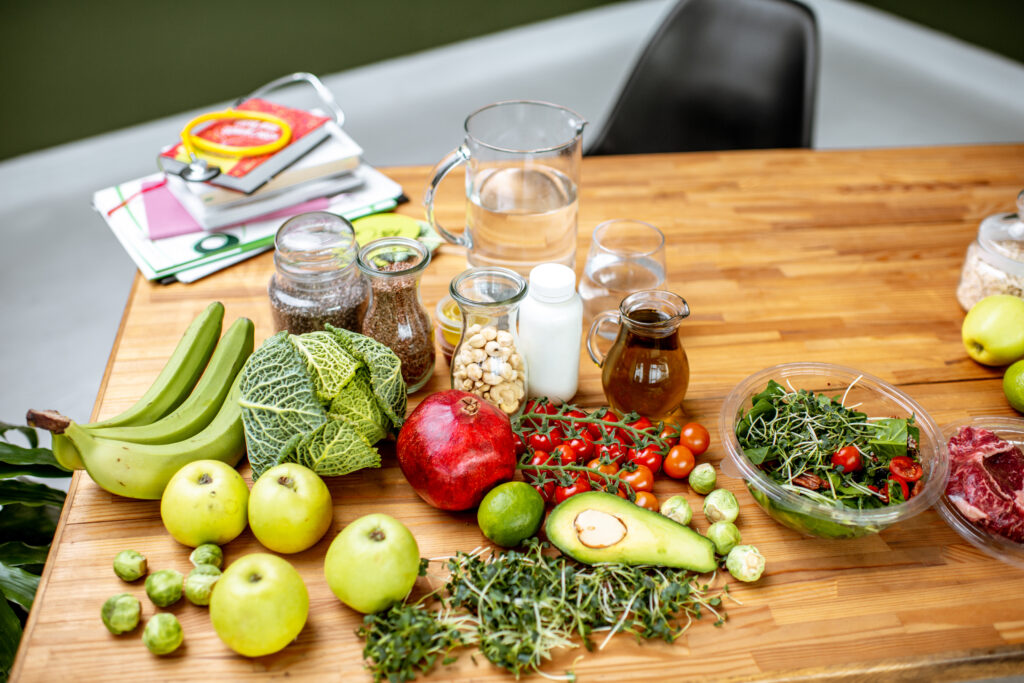Most of us don’t give food labels much thought. We trust the labels on our food, believing that the products we buy are safe or healthy enough. But have you ever stopped to wonder what’s actually in the food you’re eating? I certainly didn’t, until I was hit with a health crisis that forced me to rethink everything. Diagnosed with fibroids in my 20s, I started to see a direct connection between the foods I was eating and my health problems. That’s when I began my journey into ingredient literacy, and let me tell you—it changed everything.
Ingredient literacy is the ability to decode food labels and know what’s in the products we consume. It’s about understanding the impact of preservatives, artificial sweeteners, colorings, and chemicals that sneak their way into the foods we eat daily. If more of us had this knowledge, we could take back control over our health and stop blindly trusting labels.
Here’s why ingredient literacy is essential—and how it can transform your health.
1. Why Most People Don’t Read Food Labels (And Why They Should)
For many years, I didn’t question the foods I bought. Why would I? I trusted that they were safe. But as I started diving deeper into ingredient lists, I realized how little I knew. The truth is, most of us don’t read food labels because we haven’t been taught to understand them. This isn’t laziness—it’s ignorance. We’ve been conditioned to trust food companies, government labels, and marketing slogans without ever questioning what’s really in the food we’re eating.
When I first started reading food labels, I was shocked at how many artificial additives and preservatives I had been consuming without realizing their harmful effects. Ingredients like high-fructose corn syrup, MSG, and artificial sweeteners were common in my diet. These additives are chemicals that mimic real nutrition, but they do nothing to nourish your body. Instead, they disrupt your hormones, gut health, and brain function.

2. The Dangers Hidden in Processed Foods
The real pandemic in this country isn’t a virus—it’s the toxic food industry that’s poisoning us from the inside out. Processed foods, which we often turn to out of convenience, are packed with chemicals that don’t belong in our bodies. These chemicals are designed to make foods taste better, last longer, or look more appealing, but they come at a serious cost.
Many of the ingredients in processed foods are linked to obesity, diabetes, fibroids, heart disease, and even cancer. The additives you’ll find in these foods, such as preservatives, artificial colorings, and flavor enhancers, disrupt your body’s natural systems.
For example, BPA, often found in food packaging, is a hormone disruptor that has been linked to fertility issues and obesity. Artificial sweeteners like aspartame can contribute to insulin resistance and metabolic dysfunction. And MSG, a flavor enhancer, is known to cause headaches, brain fog, and even weight gain. It was when I realized how much of this stuff I was consuming that I knew I had to make a change.
3. How Ingredient Literacy Empowers You to Take Control
Ingredient literacy is about more than just knowing what’s in your food. It’s about understanding how what you eat affects your body. The more I learned about the harmful effects of food additives, the more I realized how much control I could take over my health simply by choosing whole, clean foods. I could see a direct connection between the foods I consumed and the fibroids that had caused me so much pain. I also saw how eating cleaner, whole foods helped to shrink my fibroids naturally.
By learning to read labels, I took back my power. No longer was I dependent on the food industry’s idea of what was “safe” for me. I began to make choices based on knowledge and awareness, which meant I was eating for my health, not convenience.

4. The Science Behind Ingredient Literacy: Why It Matters
Studies show that many of the chemicals added to processed foods are linked to a wide range of chronic illnesses. Preservatives, artificial colors, sweeteners, and flavor enhancers are toxic to our bodies. Research has shown that these additives can disrupt hormonal balance, cause inflammation, and even alter brain function.
For example, artificial colors found in everything from cereals to candies have been linked to behavioral problems and learning difficulties in children. And the refined sugars in processed foods have been connected to insulin resistance and diabetes. But perhaps the most alarming fact is that many of these additives accumulate in our systems over time, increasing the risk of developing chronic diseases.
The more I understood the science behind these ingredients, the more I realized that ingredient literacy isn’t just a trend—it’s a necessary life skill.
5. Start Reading Labels Like a Detective
You don’t have to become an expert overnight, but you can start making small, powerful changes right now. Here’s how:
- Start with the basics: Look for ingredients you recognize and trust. If it’s a long list of unpronounceable words, it’s likely processed and contains chemicals.
- Get familiar with harmful additives: Learn to identify common chemicals like monosodium glutamate (MSG), aspartame, artificial colors, and high-fructose corn syrup.
- Buy whole foods: Stick to foods with fewer than 5 ingredients, preferably ones you recognize and can pronounce. These are often whole, unprocessed foods.
- Look for alternatives: Instead of packaged snacks, try homemade versions or fresh fruits, vegetables, and nuts.
Over time, you’ll start to notice a change. Your body will thank you for feeding it clean, nourishing food. And the more ingredient-literate you become, the more empowered you’ll feel in making healthy choices for yourself and your family.

Reconnecting With Your Health from the Food Industry
Ingredient literacy is radical because it challenges the status quo. We live in a world where convenience often trumps health, but by rejecting the norms of the food industry, we’re choosing health over convenience. When you start reading food labels, you’re taking control of your health in a way that empowers you to make choices that work for your body, not the food industry’s bottom line.
Learning to read ingredients is more than just a way to avoid toxins—it’s an act of self-care, a declaration that you care about your health and are willing to take action. It’s time to stop trusting labels blindly and start being the advocate for your own well-being.
What’s your view on this topic?
As always, thank you for reading.
Kenise Adams

